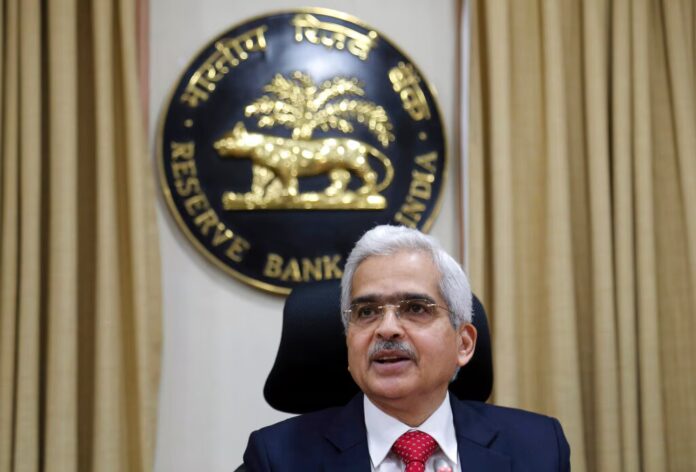RBI Governor Affirms Indian Rupee’s Stability as Monetary Policy Shift and Inflation Forecasts Adjusted
Rupee Remains the Least Volatile Among Emerging Market Currencies, Says RBI Governor
On October 9, Reserve Bank of India (RBI) Governor Shaktikanta Das highlighted that the Indian rupee continues to demonstrate resilience and stability, marking it as the least volatile currency among emerging market economies (EMEs). This statement came in the wake of the Monetary Policy Committee (MPC) meeting, where the RBI maintained the repo rate steady at 6.5 percent for the tenth consecutive time. However, the RBI did announce a shift in its monetary policy stance to “neutral,” signaling a balanced approach towards managing inflation while supporting economic growth.
During the press briefing, Das reported that the exchange rate of the rupee (INR) has remained largely range-bound throughout the current financial year, up to October 8. At the time of the briefing, the rupee was trading at approximately 83.9238 against the US dollar, a slight decrease from 83.9637 earlier that morning. This consistency in the rupee’s exchange rate underscores the currency’s relative stability amid fluctuating global economic conditions.
One significant development following the MPC meeting was the easing of the 10-year benchmark bond yield. After the RBI’s decision to adopt a “neutral” stance, the yield dropped by around 5 basis points (bps), raising hopes for a potential rate cut in the upcoming December policy review. By 10:51 am, the 10-year benchmark bond was trading at 6.7534 percent, down from an opening rate of 6.7947 percent and a closing rate of 6.807 percent from the previous session.
The MPC’s decision to keep the policy repo rate unchanged at 6.50 percent was unanimous among its members. Das emphasized that the central bank remains committed to achieving a durable alignment of inflation with the target rate while simultaneously supporting economic growth. This careful balancing act reflects the RBI’s ongoing efforts to navigate the complexities of the current economic landscape, which includes rising inflation pressures and global economic uncertainties.
In conjunction with its monetary policy decisions, the RBI also revised its inflation projections for the second quarter of the current financial year. The central bank now forecasts inflation to be around 4.1 percent, a decrease from the previously projected 4.4 percent in August. This adjustment is significant as it reflects the RBI’s proactive approach in responding to economic indicators and adjusting its strategies accordingly.
Additionally, the RBI revised its projections for the Consumer Price Index (CPI) inflation for the fourth quarter of FY25 to 4.2 percent, down from the earlier estimate of 4.3 percent. This downward revision suggests that the RBI is taking a cautious stance in light of recent economic data, which indicates potential fluctuations in inflation due to various factors, including seasonal variations in food prices.
Das noted that the CPI print for September is expected to witness a considerable spike due to adverse base effects coupled with an uptick in food price momentum. This surge can be attributed to the lingering effects of production shortfalls in key staples such as onions, potatoes, and channa dal. The impact of these agricultural fluctuations is crucial, as food prices constitute a significant portion of the overall CPI, directly affecting consumer inflation expectations.
The RBI’s approach, especially in maintaining a neutral stance, is indicative of its commitment to closely monitor economic indicators and adjust policies to ensure stability. By avoiding drastic rate changes while focusing on a balanced approach to inflation and growth, the RBI aims to create a conducive environment for investment and consumer spending.
Furthermore, the global economic landscape continues to be marked by uncertainties, including geopolitical tensions, supply chain disruptions, and fluctuating energy prices. In this context, the RBI’s cautious yet proactive stance is essential to safeguard the Indian economy against potential external shocks.
As the rupee remains less volatile than its peers in the emerging market space, it reflects the strength and resilience of the Indian economy. A stable currency is vital for maintaining investor confidence, promoting trade, and facilitating economic growth. The RBI’s careful management of monetary policy will be crucial as India navigates these challenging times.
In summary, the recent developments surrounding the Indian rupee and the RBI’s monetary policy decisions highlight a period of cautious optimism for the Indian economy. While the central bank has maintained the repo rate, its shift to a neutral stance signals an intention to remain flexible in response to evolving economic conditions. With the revised inflation forecasts and a focus on stabilizing the currency, the RBI is positioning itself to support sustainable growth while managing inflationary pressures. As the situation continues to evolve, stakeholders will be keenly watching how these developments unfold in the coming months, particularly regarding their impact on consumer prices, investor sentiment, and overall economic health.

